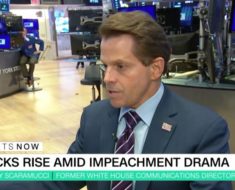Since 2002, Equities First Holdings has been filling an important gap in the lending market through one of the sector’s most innovative business models.
Founded by its current CEO, Al Christy, Equities First Holdings was a pioneer in securities-based lending. At the time the company started, this practice was almost unheard of outside of the highest echelons of investment banking. In fact, the lending model that Equities First Holdings would eventually adopt would be materially different than anything that had existed before.
An idea whose time has come
Christy was able to accurately identify a large potential market that was not being adequately served by current lending practices. However, in the early to mid-2000s, interest rates were still high, and investors were generally more conservative, preferring to sink their money into high-grade bonds with attractive yields or other nearly surefire capital investments.
However, that all changed with the financial crash of 2008. In the subsequent decade, right up to the present, interest rates were battered into the ground. In many cases, real interest rates have actually become negative. This has had two important effects on the lending market. The first is that it has made the use of borrowed money for investing far more attractive. The second is that it has forced more money into equity markets. This has skewed the total available collateral picture dramatically towards publicly traded securities, with nearly $80 trillion held in publicly traded stocks globally.
Consequently, Equities First Holdings has been shot to the forefront of the global lending industry. With a virtually seamless process that can get seven- or eight-figure sums into the hands of borrowers in a matter of hours, Equities First Holdings’ rock-bottom interest rates of 3 to 4 percent on big-money loans have made their services one of the most attractive alternatives for those who seek non-purpose loans.
Filling market voids while helping clients change the world
One of the greatest benefits of Equities First Holdings’ business model is the company’s ability to push projects through that might otherwise not happen at all.
One example is the deal that Equities First Holdings’ Australian subsidiary did with Melbourne-based Environmental Clean Technologies Limited. Equities First Holdings was able to provide an eight-figure loan to ECT in order for the latter company to proceed with an important green-energy project in India.
The project, which involves the construction of a sophisticated coal-beneficiation plant, promises to help dramatically improve the environment around coal-fired plants in a country that has long garnered one of the worst environmental reputations in the world. However, because of notable financial disasters within the Indian energy sector, including the Dabhol Power Company deal that was a major factor in the eventual collapse of notorious energy giant Enron, this is exactly the type of project that major banks and other lenders tend to shun. But Equities First Holdings was able to enter into an agreement with ECT that provided them the needed capital within just days, at an interest rate that made the project feasible.
Another recent securities-based loan helped British semiconductor firm IQE achieve its goals. The IQE deal was interesting because it illustrated Equities First Holdings’ ironclad integrity when it comes to fulfilling its end of the bargain.
In the case of IQE, an initial loan of around $2.5 million was made to the company’s president, which was backed by IQE securities that were worth slightly more than $3 million at the time. However, throughout the course of the loan, the value of the IQE securities shot through the roof, eventually increasing in value to more than $20 million.
While this sort of dramatic price movement is not frequent during a normal loan’s lifespan, it can happen. In this case, Equities First Holdings delivered the stocks back to their owner upon repayment of the initial principal. While many companies may have fallen for the strong temptation to cash in on the collateral by playing various games with the debtor, Equities First Holdings held true to its impeccable reputation for honest dealings, returning to its client the now heavily appreciated collateral.
Like a home equity loan without the risk
Equities First Holdings has now completed billions of dollars’ worth of loans. The surge in popularity of this type of borrowing is easy enough to understand: The Equities First Holdings model takes all of the best features from many different types of lending while managing to minimize or eliminate their respective drawbacks.
The first and most important feature of Equities First Holdings’ lending model is that it allows for veritably huge sums to be loaned out with no recourse and no fixed purpose. In practice, most of the company’s customers are current business owners or entrepreneurs who have a specific investment strategy that they are pursuing. But the fact that the money is effectively free and clear the moment it is wired means that clients can skip all of the drawdown schedules, status meetings and approval signoffs that are often required with big-money loans for large-scale business projects.
There are many other notable advantages of going with Equities First Holdings. The company can provide seven- or eight-figure loan amounts in the same timeframe on which payday lenders or title loan companies operate, often delivering cash into their clients’ hands in a matter of days or even hours.
This payday-lending-like speed is combined with HELOC-like interest rates, often as low as 3 percent. And because Equities First Holdings offers strictly no-recourse loans, there is no risk of the borrower losing their primary residence or any similar life-upending outcome in the event of loan default.
Finally, as in the case of the Environmental Clean Technologies’ India project, Equity First Holdings enables its clients to fund projects that major banks might otherwise refuse to touch. Often, some of the most socially important projects will fall into this category because they simply don’t have the same prospects for profit generation and are, therefore, perceived as carrying higher risk.
In the real world, a factory that outfits $50-million-dollar private jets with high-end furnishings is more likely to get a $20 million loan than a desalination plant in Sri Lanka that might save hundreds of lives a year. With Equities First Holdings, the latter project’s completion becomes as likely as the former.
Dil Bole Oberoi





